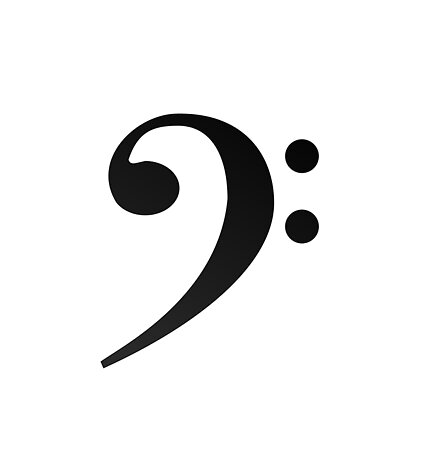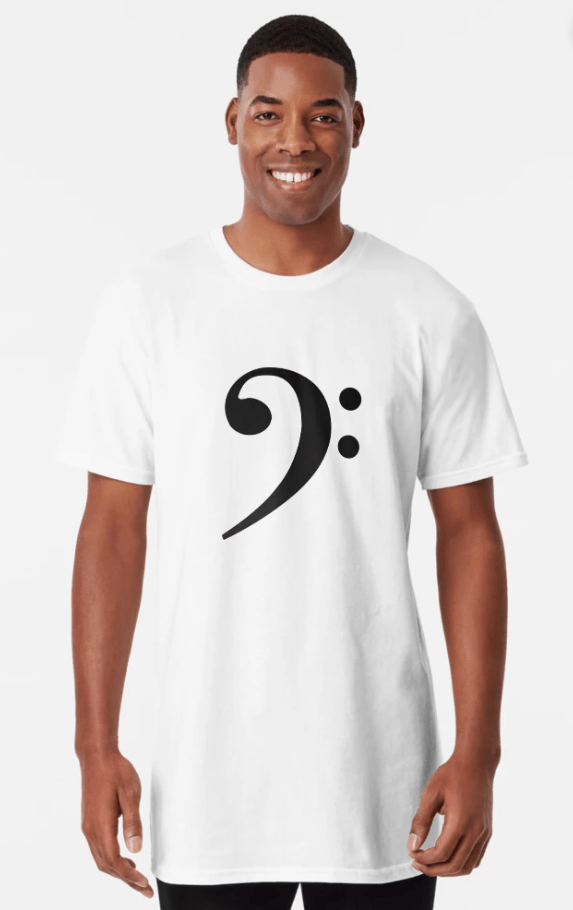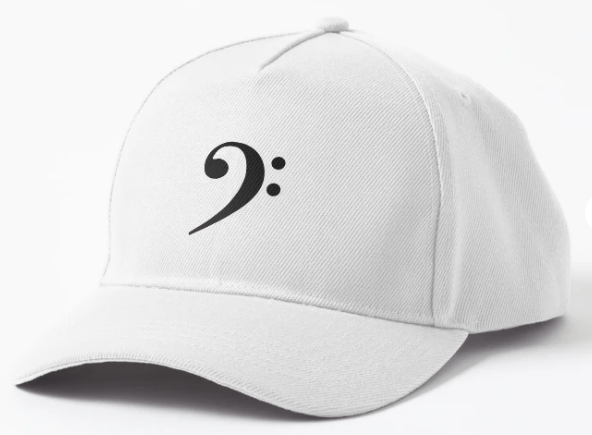Last Updated on September 12, 2024 by Iain S
Bass Clef Vibes
Why Your Next T-Shirt Purchase Might Be a Low Note (In a Good Way!)
Let’s talk about the unsung heroes of music—the basses.
You know, the folks who don’t get the flashy solos or the high-pitched screams of a soprano but instead make your soul vibrate with those deep, rumbling tones.
If you’re one of them, or simply a fan of low frequencies, I bet your closet is missing one thing: the ultimate Bass Clef T-shirt.
And hey, if you’re already part of a choir, band, or just someone who enjoys music that doesn’t break glass but rattles the ground, then this design is your spirit animal—or rather, your spirit symbol.
The Quiet Power of the Bass Clef
Let’s face it, the bass clef doesn’t always get the spotlight. I mean, the treble clef is all like, “Look at me! I’m the main event!”
But without the bass clef, music would just be a bunch of high-pitched squeals and chaos.
So here’s to the bass section—holding down the foundation and keeping it cool.
You might be wondering, Who’s snapping up these Bass Clef T-shirts?
My bet is on the basses of the world—the humble but essential members of any choir. Basses often have a low-key but confident swagger that matches perfectly with a simple yet bold Bass Clef symbol.
They’re not the ones to be extra, but they certainly know how to make a statement.
In a choir, the bass section isn’t just another voice. It’s the voice that makes your heart skip a beat, or maybe adds a bit of suspense like a thundercloud rolling in.
If you’re a bass singer, there’s a certain pride in knowing that while the sopranos hit those sky-high notes, you’re down here in the trenches, anchoring the whole operation. You are the foundation.
A Shirt for Every Bass (Or Just Someone Who Loves Them)
The beauty of the Bass Clef T-shirt lies in its simplicity. A clean, crisp design like the one we’ve got here says, “I’m the bass, and I’m cool with it.”
Whether you’re in a choir, plucking away on a bass guitar, or just love a good ol’ deep groove, this design speaks your language—without the need for words.
It’s stylish enough for a casual day out but also makes you look like you know your music theory. (Feel free to flex that at your next rehearsal.)
Not in a choir but still considering adding this to your cart? I get it. You don’t have to be an actual bass singer to enjoy the vibe.
Maybe you’re the type of person who likes to chill at the bottom of the sound spectrum, letting others hit those shrill, high notes while you provide a solid foundation.
And even if you don’t sing, maybe you’re the type who taps your foot to that deep bassline in your favorite tunes. This T-shirt? It’s for you too.
Bass Clef T-shirt: The Perfect Gig, Rehearsal, or Netflix-and-Chill Attire
Imagine rolling into your next choir practice or band rehearsal with a sleek Bass Clef on your chest.
There’s a 90% chance the director will notice, and a 100% chance your fellow basses will give you a subtle nod of approval. It’s like you’re in a secret club that only bass clef enthusiasts know about.
And when you’re not belting out those low notes? This shirt is perfect for lounging.
Whether you’re plopped on the couch binge-watching your favorite music documentaries or catching up on the latest season of whatever’s trending, you’ll feel like a relaxed musical genius.
The Subtle Art of Selling Out (In Style)
The fact that this shirt is gaining traction with sales is no surprise. Think of it as an exclusive badge for the coolest music nerds around.
Wear it to the next choir performance or slip it on while walking down the street, and you’ll probably spot a fellow bass head across the way giving you that knowing glance, as if to say, “Yeah, you get it.”
If you’re looking for a gift for the musician in your life—or just something new to wear to choir rehearsals or open mic nights—this Bass Clef T-shirt is an absolute must-have.
It’s the kind of subtle flex that’ll make you feel a little extra cool without needing to shout it from the rooftops. After all, isn’t that what being a bass is all about?
Where to Buy
Ready to join the bass clef revolution? Whether you’re buying for yourself, your favorite bass in the choir, or someone who just loves all things musical, head over to GloxxiDesign’s Redbubble Shop and grab your very own Bass Clef T-shirt.
Trust me—this is the shirt your music-loving soul has been waiting for.
So there you have it! A deep dive (pun intended) into the world of bass clefs and how this T-shirt design might just be the perfect symbol for all you lovers of low notes out there.
Time to stock up—those basses aren’t going to stop singing anytime soon!
Ah, so you want to dive even deeper (yep, that pun’s not going anywhere) of music theory and history?
Let’s talk about the bass clef—where it came from, why it looks the way it does, and how it contrasts with its louder, flashier cousin, the treble clef.
The History of the Bass Clef: Where Low Notes Began

The bass clef we know and love today didn’t just appear out of nowhere. Its origins are rooted in medieval music notation and the need for a visual way to organize musical pitches.
Back in the day—like way back in the 9th century—monks and scholars were developing ways to write down music, since simply humming your latest composition to your buddy wasn’t exactly cutting it for the church choirs.
As music became more complex, the staff—the set of five lines we still use today—was developed.
But there was a problem: all those notes squeezed onto the same lines started to get confusing. Higher pitches were mixed in with lower pitches, and no one could tell whether they were supposed to be hitting a high “do” or a deep, resonant “so.”
Cue the creation of different clefs, which were designed to give specific reference points to different pitches.
Enter the Bass Clef (a.k.a. the F Clef)
The bass clef is formally known as the F clef, and here’s why: its original design was intended to indicate the note “F” on the staff.
The two dots we see today on either side of the bass clef symbol sit around the line where the note F falls. This is the fourth line up on the five-line staff.
In terms of design, the bass clef is a stylized version of an old “F” from medieval script.
Over centuries, this “F” evolved, lost some of its angles, and eventually became the swooping, backward “C” shape we recognize today.
The two dots were added to reinforce that, “Hey, this line right here is F!”
The role of the bass clef was to map out the lower ranges of music, typically played by instruments like the cello, bassoon, tuba, or (of course) bass guitar.
It also covers the vocal range for those blessed with deep voices—such as the basses in choirs who, as we’ve already discussed, are the unsung heroes of harmony.
Contrasting the Bass Clef and Treble Clef

Now, let’s contrast that with the treble clef, a.k.a. the G clef.
The treble clef’s origins are pretty similar to the bass clef’s, though it developed to show where the note “G” was on the staff—specifically, the G on the second line from the bottom.
Its design started as an old-school “G,” but over the years it got super fancy. In its modern form, it’s that curly, decorative symbol you see at the start of most sheet music.
Think of it as the cursive queen of clefs—artsy, swirling, and a little extra.
While the treble clef indicates where higher-pitched notes sit on the staff, the bass clef is all about those rich, low frequencies. Together, they cover the full range of musical notes, with the bass clef handling the deep end and the treble clef overseeing the upper register.
Why Different Clefs Exist: The Musical Range Problem
The reason we have multiple clefs in the first place is simple: one clef isn’t enough to map out all the notes that humans (and instruments) can produce.
If you only used the treble clef, for instance, all the lower notes would be squished down below the staff, making it hard to read.
Conversely, if we only used the bass clef, the higher notes would be uncomfortably high up—like, literally off the page.
So, by dividing and conquering with the treble and bass clefs, musicians can comfortably read music that spans a broad range of pitches.
Another interesting note (pun fully intended) is that certain instruments, like the piano, use both clefs simultaneously.
Piano sheet music often has two staves: the upper one written in treble clef for the right hand (typically playing higher notes) and the lower staff in bass clef for the left hand (which plays those lovely deep notes).
It’s like a musical yin and yang—perfectly balanced, as all things should be.
Fun Facts About the Bass Clef’s Legacy
- The bass clef was historically used for many different types of notation. Before modern standardization, it was sometimes shifted around to accommodate different pitches for various instruments.
- Today, though, it’s solidified in its spot on the fourth line, repping the F.
- While the bass clef is associated with low-pitched instruments and voices, there are instruments that “cross over” and read both clefs.
- For example, the trombone and double bass sometimes play from both clefs depending on the register they’re in.
- One quirky detail about the bass clef is that it’s actually used in percussion music too.
- When drums are written out on a staff, the bass clef is sometimes used—although there’s technically no need for the notes to align with actual pitches.
Design Evolution: Simplicity Over Time
If we compare the bass clef’s evolution with the treble clef’s, one thing stands out: the bass clef stayed simple, while the treble clef got, well, curvier.
The bass clef has always been practical, with minimal adornment, much like the bass voices it represents. Meanwhile, the treble clef’s evolution into an elaborate spiral shows the same kind of flair you’d expect from a high soprano soloist.
In a way, these visual differences represent the characteristics of the sections they represent.
The bass clef is all about function and depth—no need for fancy flourishes. The treble clef, on the other hand, embodies a bit more showmanship.
The Bass Clef’s Place in the Musical Cosmos
The bass clef is more than just a handy symbol for the lower pitches—it’s a testament to the evolution of music notation and the need to bring order to the sonic chaos.
Without it, low notes would be a mess of illegible lines below the staff, and our music would sound like a lopsided scale of high-pitched squeaks.
Whether you’re a bassist, a choir singer, or just someone who appreciates the richness of deep sounds, the bass clef holds a special place in your heart (and your ears).
And remember, next time you spot that sleek, understated bass clef design on a T-shirt, know that you’re wearing a symbol of centuries-old musical tradition.
Pretty cool for a couple of lines and dots, right?
There you have it—the fascinating history and design evolution of the bass clef, with just enough geeky details to make you feel like a music theory pro!
Keep spreading those low-frequency vibes—on your T-shirt, in your choir, or wherever the bass clef takes you.


